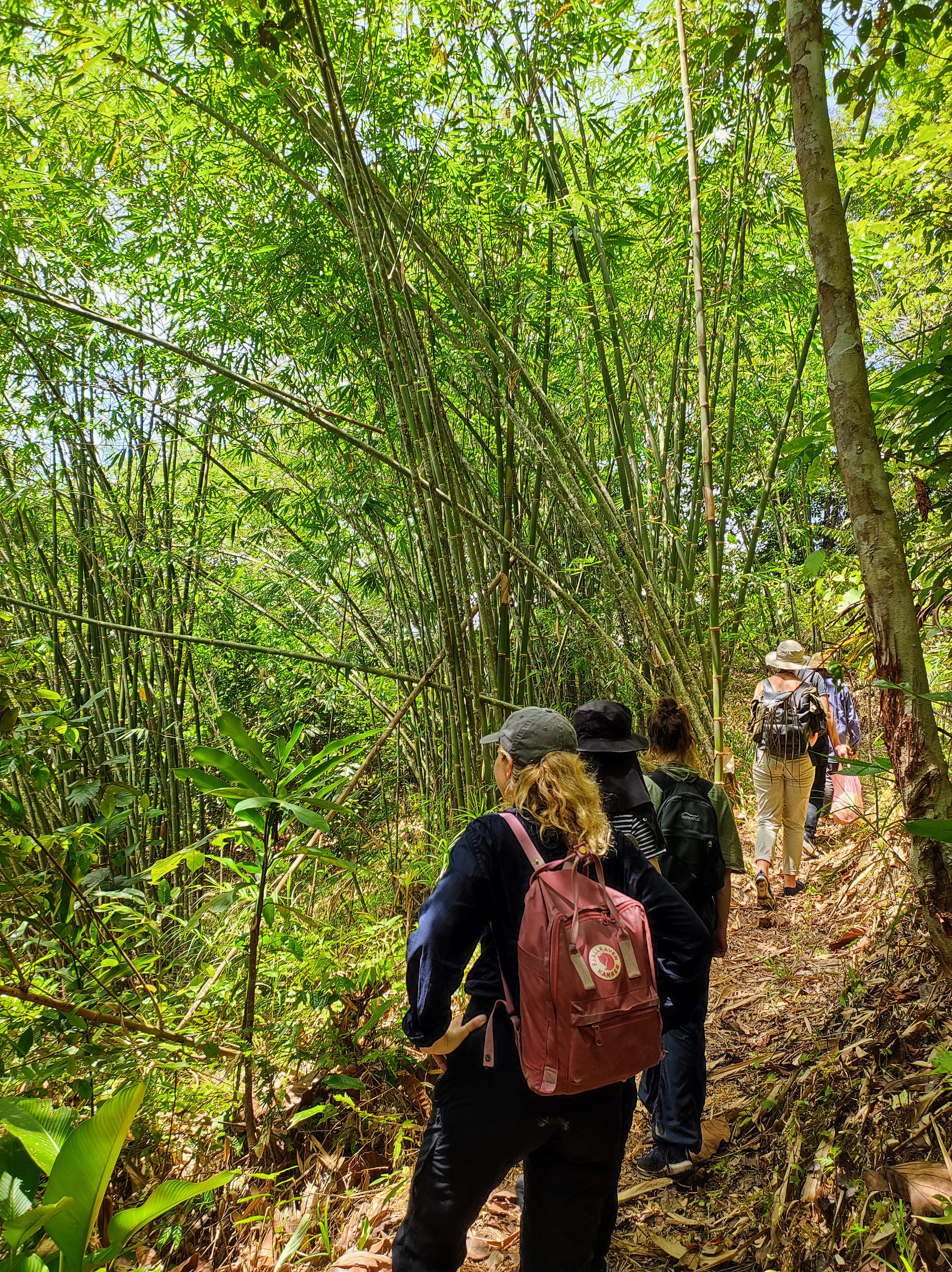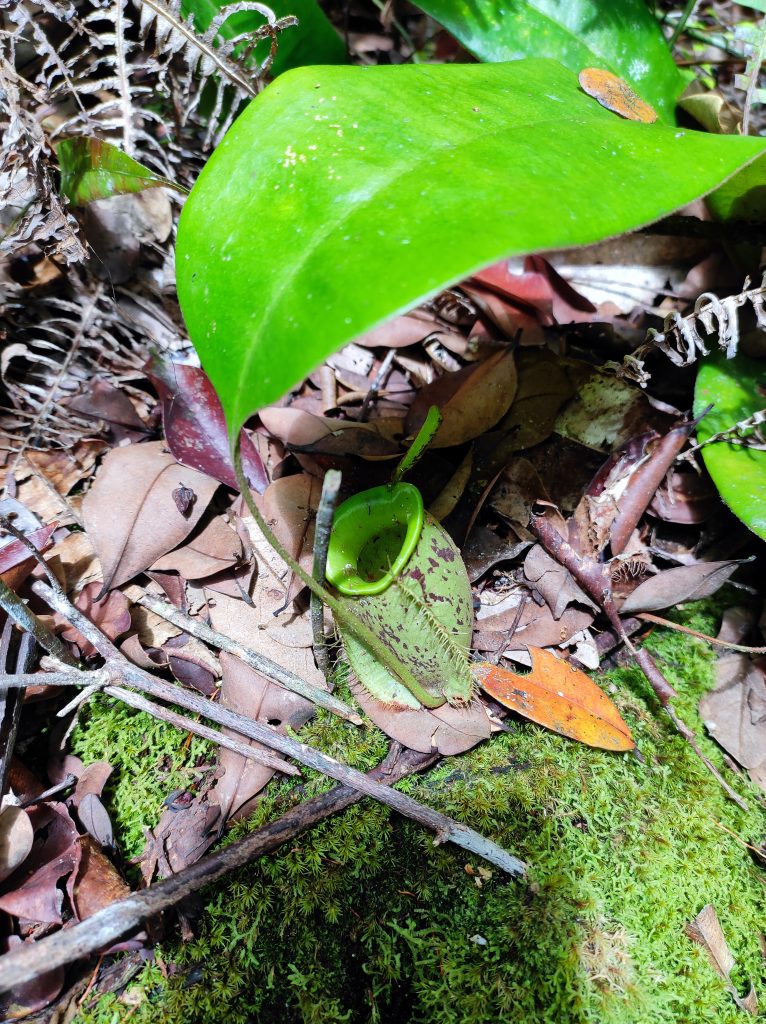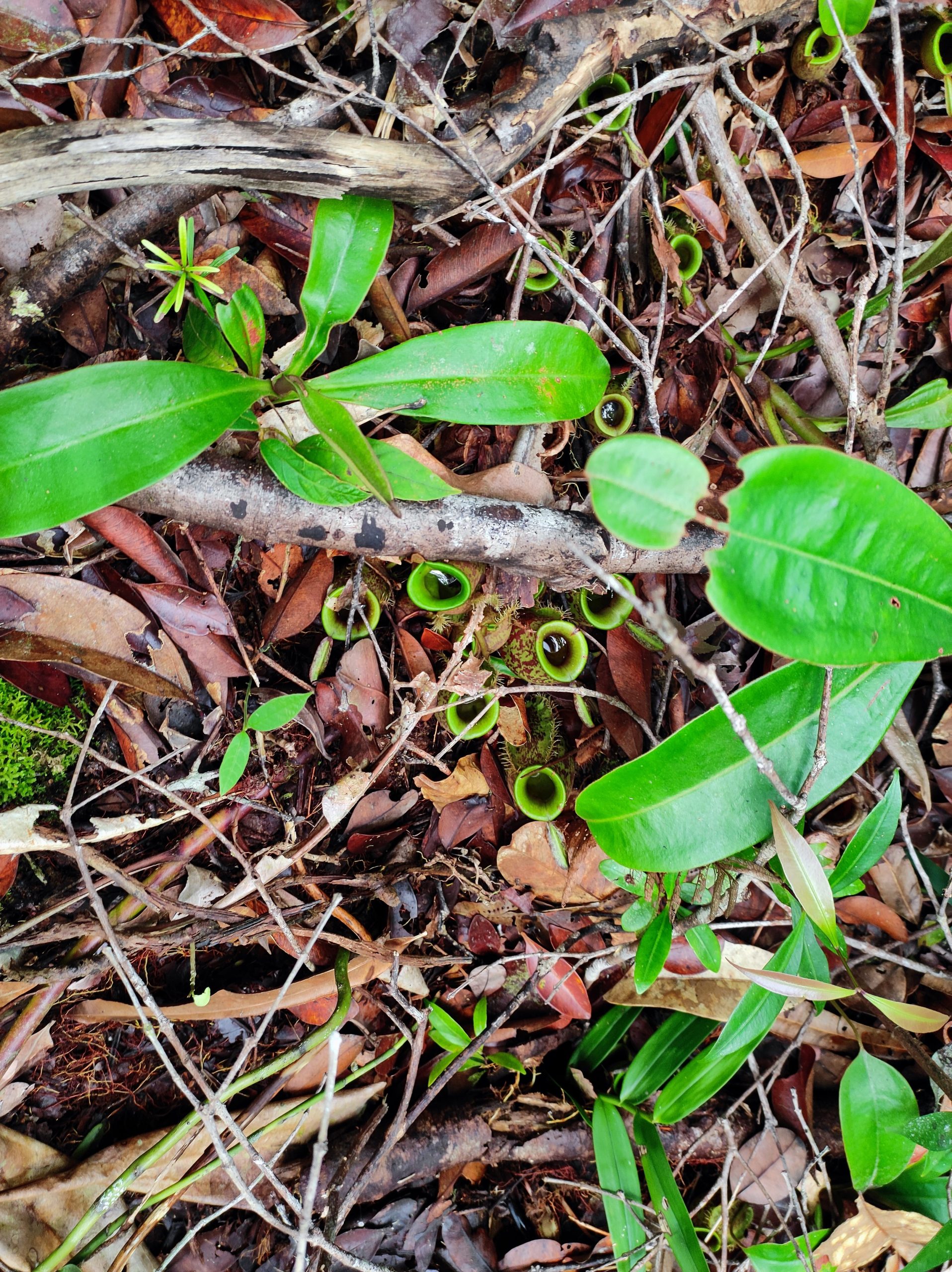We walk, single file, past patches of thick fallow dominated by various species of bamboos (there are over 1000 species!), incredibly only two years of age, staked vines of healthy pepper, bushels of silvery-green spikey lemon grass, sporadic banana trees, and lush forests crawling with life; a far cry from the monotonous agricultural landscapes found across France, Germany or Canada. The forest offers a sweet relief from the beating sun, one which we all take advantage of, setting down our bags, bringing out bottles of water, wiping the sweat from our brows. Phew – the air is heavy with humidity!

I look down at my feet … hm, my eye catches the soil under our feet. It’s not the vibrant red orange clay-heavy soil that one may find in a typical upland rice or pepper field. No, no – it’s a black and white sandy soil. The local reference for this type of forest is ‘kerangas’; which means ‘land which cannot grow rice’ in the Dayak language. I look and see that pitcher plants, low-lying carnivorous plants with passive pitfall traps, dot the forest ground. Our local guide said the pitcher plant is called lomuo’ in the Bi’mbaan Bidayuh dialect and are typical indicators of kerangas forests. Simo, the de facto headman of the village, adds that one would never cultivate the kerangas area; it is unsuitable for any other land cover than the forest we see. He further explains that the area where we are resting is known as Rabak Bejuah – the place where, according to a local legend, Nyemba’ Beden’s severed head munched all the bamboo; my thoughts spiral, not only of images of a severed head chomping at bamboo but of … soil classification, obviously.


It’s known that local soil classification systems commonly incorporate not only physico-chemical soil properties as criteria for classification but also vegetative indicators (ie. pitcher plant), crop suitability, slope and geographical location. And, from our conversation in the cool forest shade, I wonder how much such ominous stories play a role; a local story of a bamboo-eating severed head that conveys the message of the land being unsuitable for human activity, basically, a warning to ‘stay away.’ It would make me want to avoid the area, in an effort to not disturb Nyemba’ Beden. I must say, it has piqued my curiosity.
Post written by: Catherine Hepp
